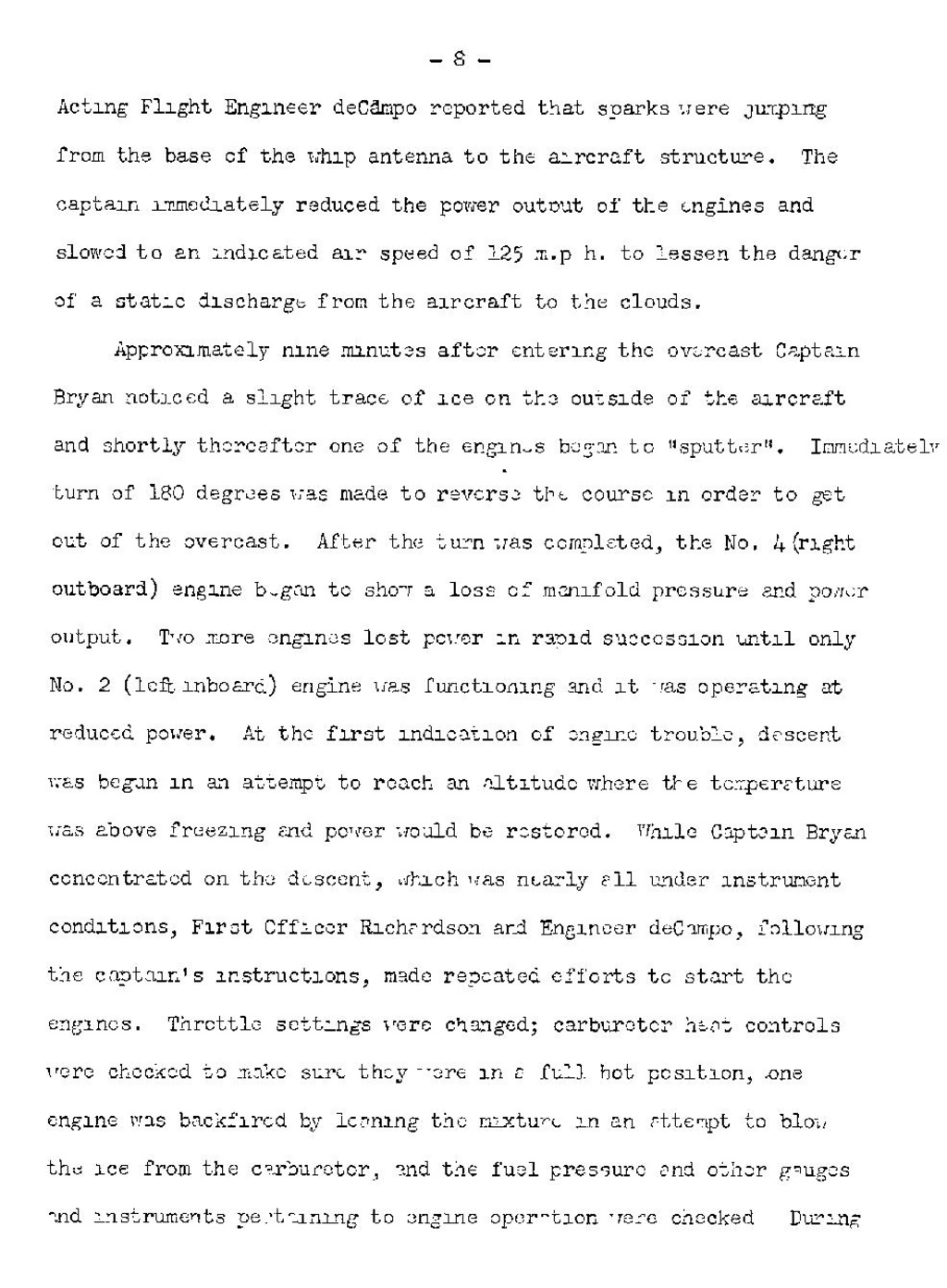- 8 -
Acting Flight Engineer deCampo reported that sparks were jumping from the base of the whip antenna to the aircraft structure. The captain immediately reduced the power output of the engines and slowed to an indicated air speed of 125 m.p.h. to lessen the danger of a static discharge from the aircraft to the clouds.
Approximately nine minutes after entering the overcast Captain Bryan noticed a slight trace of ice on the outside of the aircraft and shortly thereafter one of the engines began to "sputter". Immediately turn of 180 degrees was made to reverse the course in order to get out of the overcast. After the turn was completed, the No. 4 (right outboard) engine began to show a loss of manifold pressure and power output. Two more engines lost power in rapid succession until only No. 2 (left inboard) engine was functioning and it was operating at reduced power. At the first indication of engine trouble, descent was began in an attempt to reach an altitude where the temperature was above freezing and power would be restored. While Captain Bryan concentrated on the descent, which was nearly all under instrument conditions, First Officer Richardson and Engineer deCampo, following the captain's instructions, made repeated efforts to start the engines. Throttle settings were changed; carburetor heat controls were checked to make sure they were in a full hot position, one engine was backfired by leaning the mixture in an attempt to blow the ice from the carburetor, and the fuel pressure and other gauges and instruments pertaining to engine operation were checked. During
